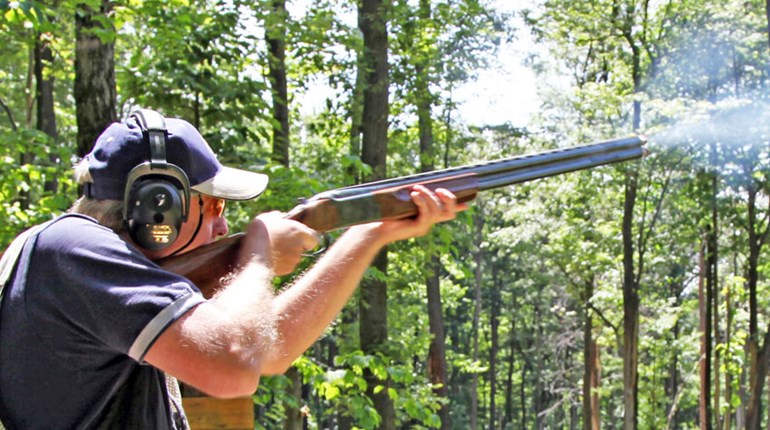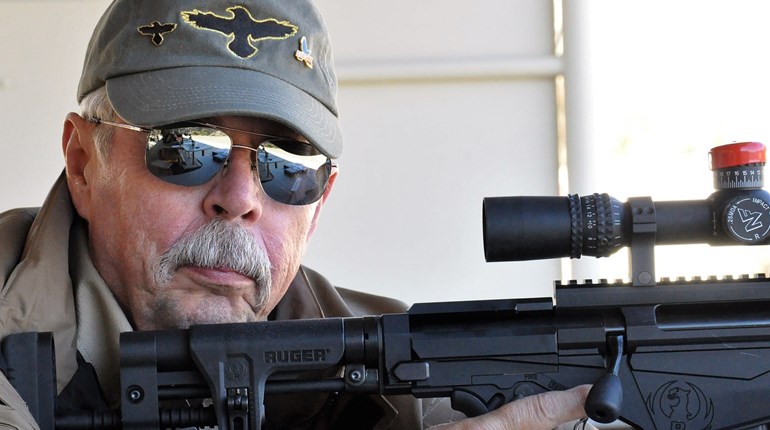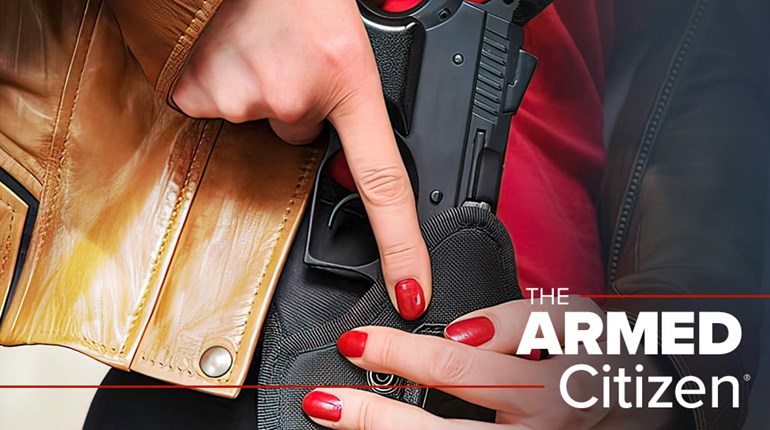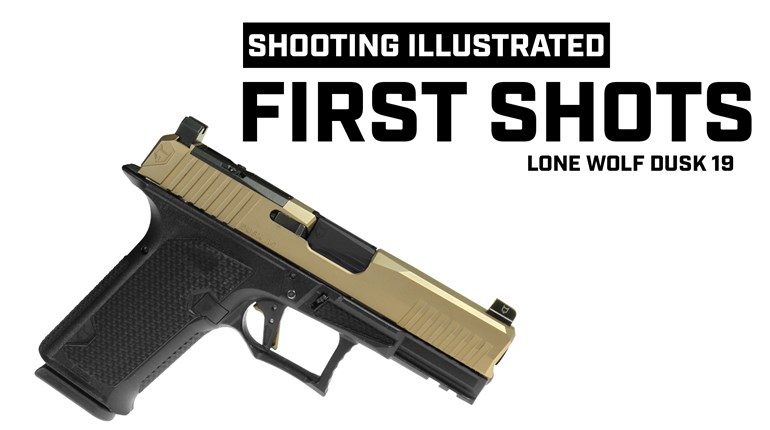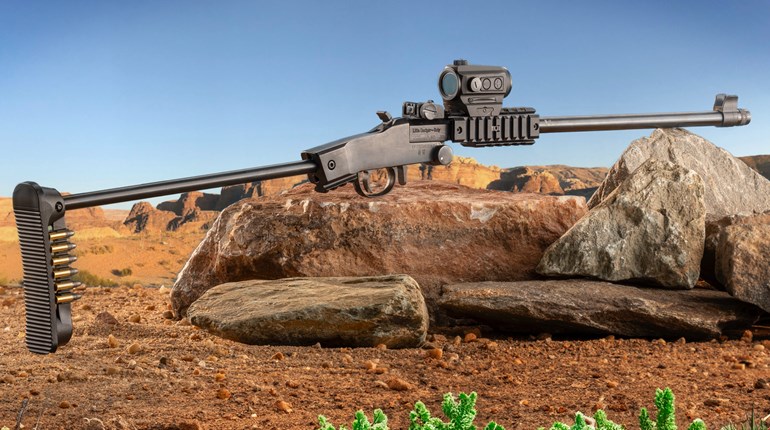
Look at the sights, control the trigger and follow through. There you have it: marksmanship fundamentals boiled down to a single phrase. Of these, follow-through is the most neglected.
But what is follow-through? In some ways, it’s more what you don’t do than what you do. You don’t jump off the trigger and look over the sights to see where the shot hit. You don’t do anything, except smoothly bring the gun back on target. It might help to use this mantra I repeat to my students on the range: “Front sight; press; trigger reset; front sight.”
Let’s break it down, starting with looking at the sights. On a gun with open sights, we look through the rear sight, focus on the front sight and align the front and rear sights. Controlling the trigger means pressing it to the rear without disturbing the alignment of the sights. Follow-through refers to resetting the trigger and looking (again) at the front sight. The principle is the same for red-dot sights and telescopic sights—stay focused on the reticle.
So why bother following through by staying focused on the front sight? After all, you’re anxious to see where the bullet hit your target and if you’re in a fight you have more than just a casual interest in whether your shot has stopped the threat. So, real-deal gunfighters must ignore follow-through, right?
Not so fast, Rambo. While I admit that some trainers and police agencies don’t teach it, I maintain that if you want to hit, you need to discipline yourself to follow through. By staying on the front sight after the shot, you’re mentally preparing yourself to fire the next shot. That’s important if you’re firing multiple shots on a target, and it’s even more important if you’re in a fight.
What happens if you don’t follow through? Often, you’ll miss or get a poor hit with the bullet striking the target somewhere other than the point of aim. Most frequently, this error results in low hits. When you lift your head off the sights as you fire a shot, you are lowering the gun. Remember, the bullet is going to hit wherever the sights were on the target as the shot is fired, so if you move the muzzle down, the hit will be low. The error gets worse the farther you are from the target, and a shot that prints inches low at three yards will result in a miss measured in feet as the range increases.
This is the reason we train our students in a tactical live-fire simulator. When Jeff Cooper founded Gunsite, the American Pistol Institute at Gunsite Ranch, his genius devised a training program that included the use of simulators. At the time, outside of very few police departments and military branches, simulators weren’t used in marksmanship training and civilian shooters had no access to them at all. Aside from teaching tactics, Cooper understood the need for simulators to emphasize marksmanship fundamentals.
Yes, we’re teaching tactical movement, but even more importantly, we’re reinforcing the square-range lessons in the simulators. After three days on the range, we take the students through an indoor and an outdoor simulator each morning on the last two days of class. The marksmanship problem is easy because the targets are big and close, but on the first day, many of the students still find themselves getting poor hits or missing altogether.
What’s the lesson? If you don’t look at the sights, control the trigger and follow through, you will not be successful. We emphasize those fundamentals, but some folks need convincing, and the simulators drive the point home. On day two, we usually see remarkable improvement as the students demonstrate their new understanding of this simple truth.
As anyone who has trained with me has heard: I don’t care whether you’re in your bedroom, out on the street or hanging off the skid of a helicopter, if it comes to a moment you must shoot, you need to look at the sights, control the trigger and follow through to successfully solve your problem.
The next time you’re practicing your shooting, have an honest conversation with yourself and ask if you’re seeing the sight after the shot breaks. If not, you know what you need to work on.
Get after it! I guarantee your marksmanship will improve.
So—altogether now—repeat after me: “Front sight; press; trigger reset; front sight.”













